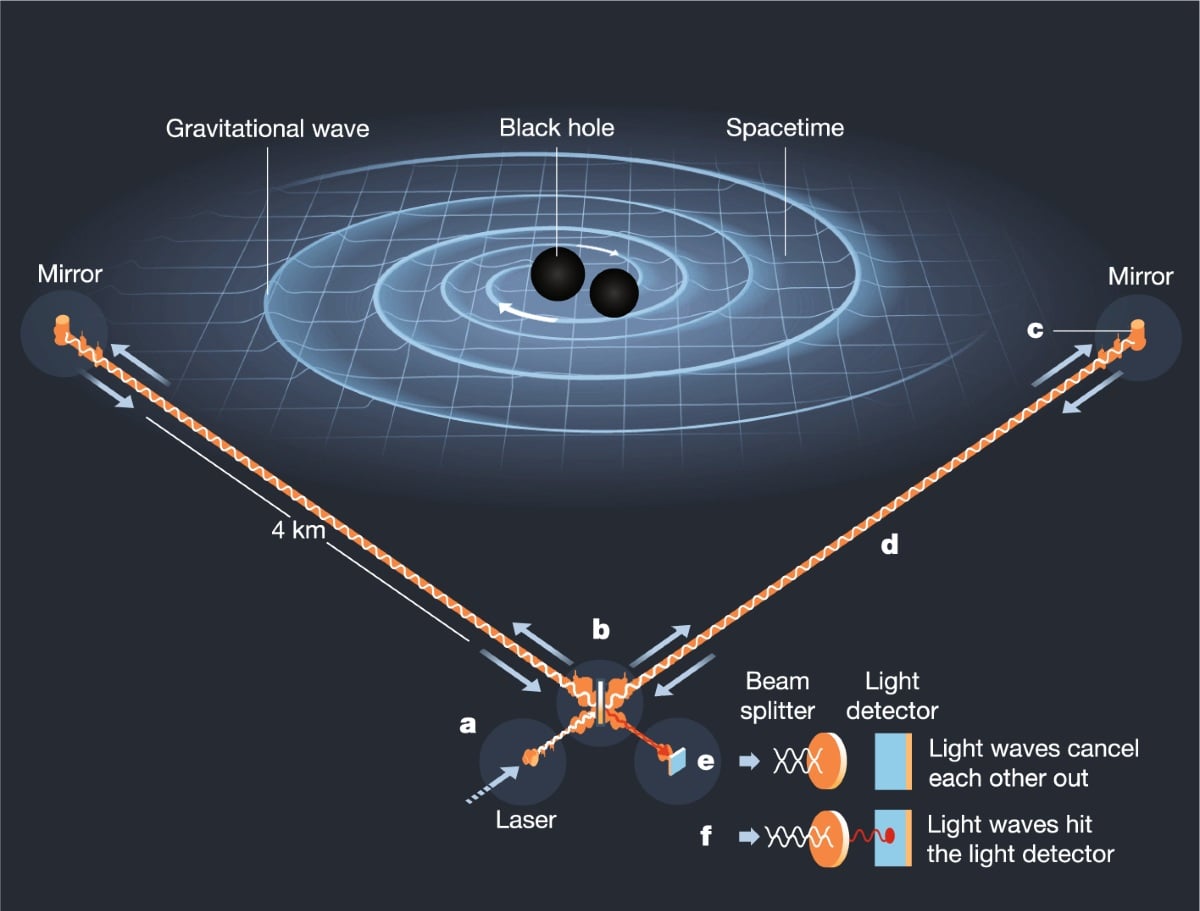In 2016, scientists with the Laser Interferometer Gravitational-Wave Observatory (LIGO) made history with the first-ever detection of Gravitational Waves (GWs). These events, originally predicted by Einstein's Theory of Relativity, are caused by the merger of dense objects like neutron stars and black holes. Since then, the LIGO team partnered with the Virgo Gravitational Wave Interferometer (Virgo) in Italy and the Kamioka Gravitational Wave Detector (KAGRA) in Japan to form the LIGO-Virgo-KAGRA (LVK) Collaboration.
During their observation runs, the LVK Collaboration has detected 290 GW events. In recent news, the Collaboration announced the detection of the most massive black hole merger to date using the National Science Foundation (NSF)-funded LIGO observatories. The merger, designated GW231123, was detected during the LVK's fourth observing run on November 23rd, 2023. Based on the signal this event produced, the Collaboration team determined that the merger occurred between black holes that were approximately 100 and 140 Solar masses and created a black hole approximately 225 times the mass of our Sun.
The previous record holder was detected in 2021 (GW190521), a merger of two spinning black holes that produced a black hole approximately 140 times the mass of our Sun. As for GW231123, the black holes involved more than doubled that record and were spinning so rapidly that they pushed the limits of current GW detection technology. To extract accurate information on the signal, the LVK team needed to consult theoretical models that account for the intricate dynamics of rapidly spinning black holes.
By their nature, violent cosmological events like black hole mergers produce "ripples" in spacetime that can be detected billions of light-years away. Gravitational Wave observatories detect these ripples using interferometers, devices that rely on lasers and other methods to measure the interference of waves. Mark Hannam, a Professor with the School of Physics and Astronomy at Cardiff University, the head of their Gravity Exploration Institute, and a member of the LVK Collaboration, explained in a Caltech press release:
This is the most massive black hole binary we've observed through gravitational waves, and it presents a real challenge to our understanding of black hole formation. Black holes this massive are forbidden through standard stellar evolution models. One possibility is that the two black holes in this binary formed through earlier mergers of smaller black holes.
"The black holes appear to be spinning very rapidly—near the limit allowed by Einstein's theory of general relativity," added Charlie Hoy, a postdoctoral research fellow at the University of Portsmouth and a member of the LVK. "That makes the signal difficult to model and interpret. It's an excellent case study for pushing forward the development of our theoretical tools." In addition, astronomers are still not sure that the signal was produced by the merger of two massive black holes.
While this is the most likely scenario, it will likely take years for the scientific community to unravel the signal pattern and implications of GW231123. Says Gregorio Carullo, an Assistant Professor with the School of Physics and Astronomy at the University of Birmingham, "more complex scenarios could be the key to deciphering its unexpected features. Exciting times ahead!" Events like this one are therefore helping astronomers refine their analytical methods and the astrophysical models used to interpret these events.
 How interferometers measure ripples in spacetime to detect Gravitation Waves. Credit: ©Johan Jarnestad/The Royal Swedish Academy of Sciences.
How interferometers measure ripples in spacetime to detect Gravitation Waves. Credit: ©Johan Jarnestad/The Royal Swedish Academy of Sciences.
The Collaboration's findings on GW231123 will be presented at the 24th International Conference on General Relativity and Gravitation (GR24) and the 16th Edoardo Amaldi Conference on Gravitational Waves, which will be held jointly (the GR-Amaldi meeting) from July 14th to 18th, 2025, in Glasgow, Scotland. The fourth observing run began in May 2023, and additional observations from the first half of the run (up to January 2024) will be published later in the summer. The calibrated data used to detect and study GW231123 will be made available through the Gravitational Wave Open Science Center (GWOSC).
"This event pushes our instrumentation and data-analysis capabilities to the edge of what's currently possible," said Sophie Bini, a postdoctoral researcher at Caltech and member of the LVK. "It's a powerful example of how much we can learn from gravitational-wave astronomy—and how much more there is to uncover."
Further Reading: Caltech

